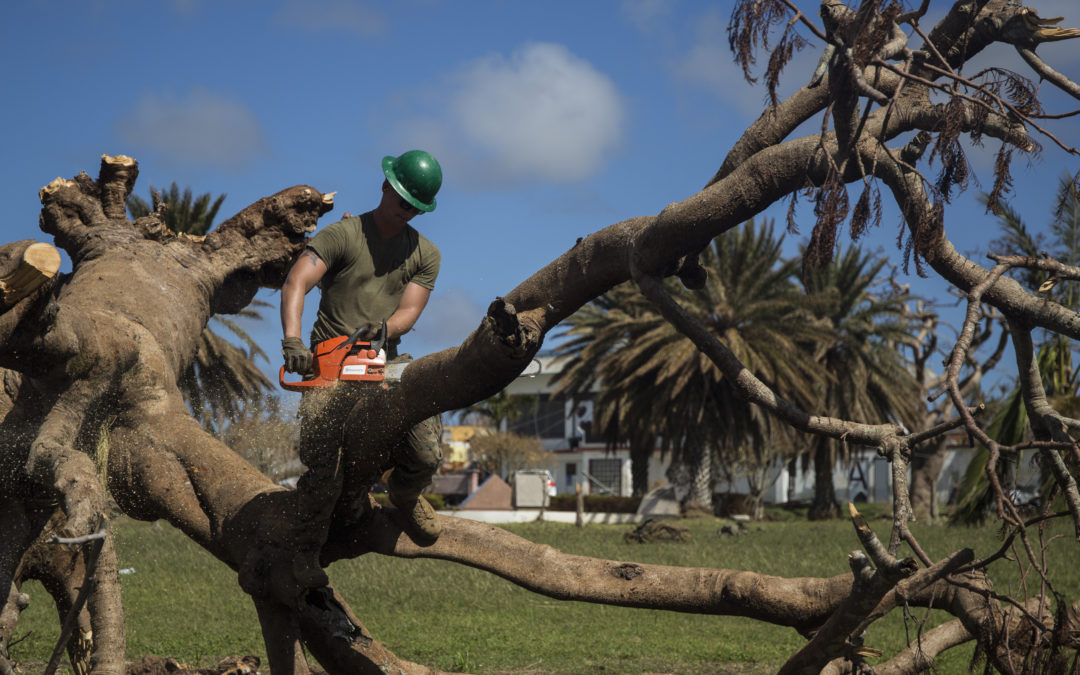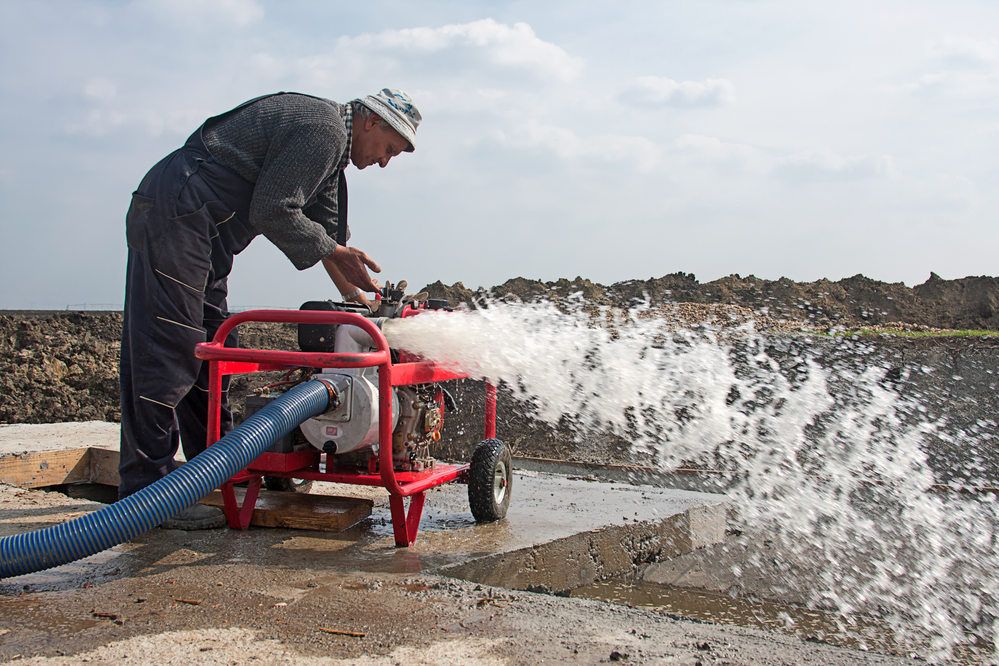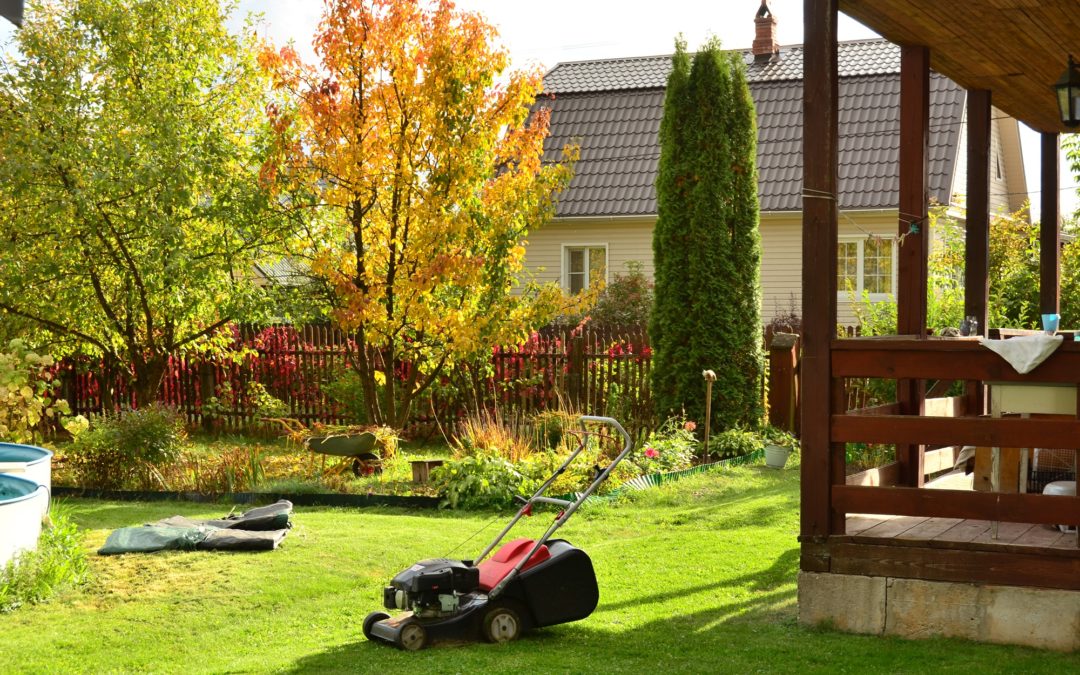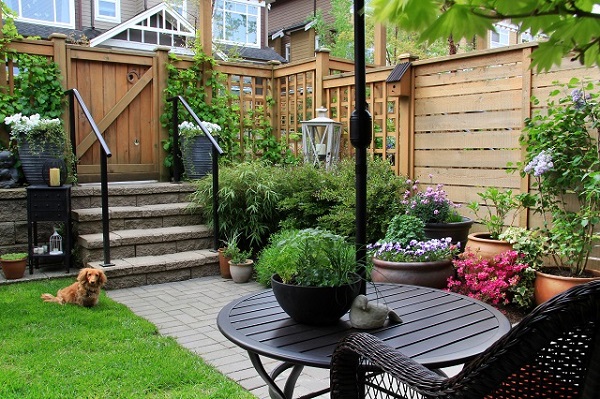
Storm Preparedness: Tips to Prepare Ahead of a Natural Disaster
The preparations homeowners make now – ahead of storms, floods, or hurricanes – can help them recover faster and stay safe during clean-up, especially important for those hoping to sell their home so showings don’t get sidelined because of a natural disaster. The Outdoor Power Equipment Institute (OPEI), an international trade association representing manufacturers and suppliers of power equipment, small engines and battery power, utility and personal transport vehicles, and golf cars, and managing partner of GIE+EXPO, reminds homeowners that it’s best to get ready before a storm strikes.
“In the rush right before the storm, people sometimes forget to make sure their outdoor power equipment is in order,” said Kris Kiser, President and CEO of OPEI. “They also run out of time as weather is often unpredictable. At all times of the year, it’s important to keep your equipment in working order, have the right fuel on hand, and know where your safety gear is. This is doubly true during storm season.”
OPEI offers the following tips to help homeowners plan ahead for storm clean-up.
Make a list of what you need to clean up. Survey your property. Consider the damage a storm might cause and make a list of what tools might be needed for repairs. You might need a chainsaw, pruner, generator, or utility type vehicle.
Take stock of your outdoor power equipment. Make sure equipment is in good working order. If needed, take your equipment to an authorized service center for maintenance or repair.
Find your safety gear. Avoid the scramble for sturdy shoes, safety goggles, hard hats, reflective clothing and work gloves, which should be stored in an accessible area with your equipment.
Review the owner’s manuals for your equipment. Read product manuals to ensure you know how to operate your equipment safely.
Have the right fuel on hand. Fuel stations may be closed after a storm, so it’s important to have the proper fuel for your equipment. Store your fuel in an approved container. Use the type of fuel recommended by your equipment manufacturer. It is illegal to use any fuel with more than 10% ethanol in outdoor power equipment (for more information on proper fueling for outdoor power equipment visit LookBeforeYouPump.com).
Charge batteries. Charge the batteries for your battery-powered outdoor power equipment before a natural disaster hits so it is ready to use, even if the power goes out.
Remain calm and use common sense when using outdoor power equipment. Clearheaded thinking and smart decision-making can help you make smart choices. This is no time to rush. Take time to think through a strategy for clean-up efforts.
Use safety precautions. Be aware of fundamental dangers that can occur. For instance, chainsaw kickback may happen when the moving chain at the tip of the guide bar touches an object, or when the wood closes in and pinches the saw chain in the cut. Always stand with your weight on both feet, and adjust your stance so you are angled away from the blade. Hold the chainsaw with both hands. Never over-reach or cut anything above your shoulder height. Always have a planned retreat path if something falls.
Keep firm footing when using pole saws and pole pruners. Keep a firm footing on the ground. Observe the safety zone, which means keeping bystanders and power lines (those above you and any that might have fallen down) at least 50 feet away from your work area.
Ensure portable electric generators have plenty of ventilation. Generators should never be used in an enclosed area or placed inside a home or garage, even if the windows or doors are open. Place the generator outside and away from windows, doors, and vents that could allow carbon monoxide to come indoors. Keep the generator dry and do not use it in rainy or wet conditions. Before refueling, turn the generator off and let it cool down.
Drive Utility Type Vehicles (UTVs) with caution. Keep the vehicle stable and drive slowly. Do not turn the vehicle mid-slope or while on a hill.
Be aware of others. Keep bystanders, children and animals out of your work area. Do not allow other people near outdoor power equipment, such as chainsaws, pole saws or pole pruners when starting the equipment or using it.
Pay attention to your health. Storm cleanup can be taxing on the body and the spirit. Do not operate power equipment when you are tired or overly fatigued. Drink plenty of water and take regular breaks.
To learn more visit www.opei.org.

Flood Recovery: Tips for Safely Using Pumps When Cleaning Up
If you have experienced flooding, you know that a water pump is an important part of the clean-up process, helping move gallons of water quickly and efficiently to dry out flooded basements. When you’re in the midst of selling your home and it gets flooded, time is of the essence.
“These pumps are powerful and can speed up a cleanup job after a flood,” said Kris Kiser, President and CEO of the Outdoor Power Equipment Institute (OPEI), an international trade association representing manufacturers and suppliers of power equipment, small engines and battery power, utility and personal transport vehicles, and golf cars, and managing partner of GIE+EXPO. “In preparation for summer storm season and the possibility of regional flooding, OPEI offers these safety reminders.
Get the right pump for the job. It’s important to use the right pump for the water and debris that you are trying to clear. There are four basic types of pumps:
- A dewatering pump sucks in water through an inlet valve and ejects it from a discharge valve. They have an inlet size ranging in size from 1 to 4 inches. A 4-inch dewatering pump will finish a job 4 times faster than a 1-inch pump.
- A semi-trash pump is used to pump clear or slightly muddy and sandy water. You will want to use a hose with a strainer so the hose doesn’t get clogged with items too big to pass through.
- A trash pump is made to handle debris and solids, such as leaves, pebbles and twigs. These pumps have larger impellers and leave debris intact. Use a hose with a strainer for a trash pump, so items that are too large don’t enter.
- Diaphragm pumps are most commonly used to pump sludge and extremely abrasive liquids. The pump has a diaphragm which is pushed up and down, creating a vacuum effect that draws in water.
Know how to operate the pump. Review the manual and manufacturer’s directions, following them carefully.
Follow safety procedures. Make sure all safety guards and shields are in place while operating your water pump. Never use a pump in a flammable or explosive environment. Never pump substances that your pump isn’t designed to cope with. Acids, corrosive substances and flammable materials should not be pumped with an ordinary water pump. If in doubt, refrain from pumping.
Don’t run gasoline-fueled engine indoors. If you must use the pump indoors, ventilate the area to the outside and seal it off from the rest of the building. Never leave any pump in a confined space where heat can build up. Keep the pump at least 3 feet away from walls and other obstructions so it can ventilate. If a pump becomes overheated, switch it off and allow it to return to a safe temperature before using again.
Maintain a pump with inspections and proper fueling. Regular inspection and maintenance will make your pump last longer. Always fuel any gasoline-powered pump with E10 or less. It is illegal to use gasoline with more than 10 percent ethanol in a small engine like your pump, and higher ethanol blended fuels may damage or destroy small engine equipment. For more information on safe fueling, go to LookBeforeYouPump.com.
Store your pump safely. Remember to flush the pump case with clean fresh water, then completely drain to prevent damage from freezing. Cover the intake and discharge ports to prevent the entry of debris during storage.
To learn more visit www.opei.org.

Lawncare: Keep Safety in Mind with These 8 Tips
It’s yard work season. It’s no surprise to Realtors® that beautiful landscaping improves curb appeal, which can increase home value by as much as 17%. But in the era of physical distancing, homeowner’s green space becomes an even greater asset to home values as yards become a safe way to enjoy the outdoors, destress, and contribute to well-being.
The Outdoor Power Equipment Institute (OPEI) reminds homeowners to keep safety in mind when working in their outdoor living spaces. “Before you use a mower, trimmer, blower, power washer, chainsaw, pruner, portable generator, or other piece of outdoor power equipment this season, it’s important to refresh yourself on handling and safety procedures,” said Kris Kiser, President and CEO of OPEI. “You should take the time to do basic maintenance to ensure your equipment operates safely for the season and is ready to get the job done.”
Here are tips to help:
- Read your owner’s manual. Follow all guidelines for your outdoor power equipment and familiarize yourself with the controls. If you have lost your manual, look it up online (and save a copy on your computer for future reference).
- Inspect equipment. Check the air filter, oil level and the gasoline tank. Also check loose belts and missing or damaged parts. Replace any parts if needed.
- If you have gasoline-powered equipment and didn’t empty the tank before winter storage, drain the fuel now. You should never leave fuel sitting in the gas tank of your equipment for more than 30 days. Untreated gasoline (without a fuel stabilizer) left in the system will deteriorate, which may cause starting or running problems or damage the fuel system.
- Protect your power by only using E10 or less fuel in gasoline-powered outdoor power equipment. With today’s higher ethanol content fuels, most manufacturers are recommending a fuel stabilizer be used, especially if you don’t use up all the gas purchased right away. Some gas stations may offer 15 percent ethanol (E15) gas or higher ethanol fuel blends, but any fuel containing more than 10 percent ethanol can damage – and is illegal to use in – small engine equipment not designed for it.
- Store fuel safely. Label your fuel can with the date of purchase and ethanol content of the fuel. Never put “old” gas in your outdoor power equipment. If you don’t know the date of purchase, dispose safely of the fuel in the can and buy fresh fuel. Always store fuel out of the reach of children or pets and in approved containers.
- For battery-powered equipment, recharge only with the charger specified by the manufacturer. A charger that is suitable for one type of battery pack may create a risk of fire when used with another battery pack. Follow all charging instructions and do not charge the battery pack or tool outside the temperature range specified in the instructions.
- Store batteries safely. When the battery pack is not in use, keep it away from other metal objects, like paper clips, coins, keys, nails, screws or other small metal objects, that can make a connection from one terminal to another. Shorting the battery terminals together may cause burns or a fire.
- Clean your equipment and store it in a dry place. Remove any dirt, oil or grass. Clean equipment will run more efficiently and last longer. Never store your equipment in a place that is damp or wet.
To learn more, go to www.opei.org. For further information on safe fueling, go to www.LookBeforeYouPump.com.

6 Ways to Improve Curb Appeal While Sheltering at Home
With most people sheltering in place at home, and the real estate market on pause because of the COVID-19 pandemic, now is a great time for sellers to focus on home projects that will boost curb appeal. The living landscapes at a property – the grass, trees, shrubs, flowers, the yard and other green space – play a critical role in enhancing curb appeal.
But curb appeal is about more than just the first impression a property makes. Since we’ve all been spending more time at home and in the safe space of our backyards, buyers intimately understand the value of the yard as a place for children and pets to play, an extension of the home’s living space, and a natural setting in which to de-stress. This makes the family yard more important than ever before.
Here is a checklist of items sellers can tackle now to make the most of being at home, courtesy of the Outdoor Power Equipment Institute (OPEI). Note: some local nurseries and garden supply centers are offering curbside pick-up and delivery. In many areas, landscaping services are considered “essential” businesses and remain open, as well.
- Spring Clean: It’s likely your yard needs a good clean-up after the winter. A leaf blower will make quick work of clearing debris from flowerbeds, yards, and mulched areas under your trees. You should also fix bare patches in the grass and add a fresh layer of mulch to create a neat-looking outdoor space.
- Mow Your Lawn: A carpet of grass is inviting for potential buyers and creates a crisp backdrop for the rest of your living landscape choices. Proper mowing helps create a more beautiful, lower-maintenance, and drought-tolerant lawn. Preferred length varies by grass type, but the general rule of thumb is to cut only the top third of the grass blades off at any given time. Taller grass blades shade the soil and keep it cooler, helping control weeds. Taller grass is also softer to walk on – important for families with little feet and paws to consider.
- Trim Bushes & Trees: Use a trimmer, chainsaw or pole pruner to cut back any shrubs, bushes, or trees that have gotten overgrown during the winter. Create a polished look by using an edger to form a clean boundary between the lawn and walkways.
- Keep Safety in Mind: Before you use your mower and any other outdoor power equipment, refresh yourself on handling and safety procedures. Follow all guidelines, and familiarize yourself with the controls. If you have lost your manual, look it up online (and save a copy on your computer for easy reference next time).
- Right Plant, Right Place: Plant colorful spring flowers in flowerbeds, along fence lines, and in patio containers, especially near the front door. Remember the “Golden Rule” of living landscapes, and put the right plants in the right place. Selecting plants that are native to your climate zone (refer to the USDA’s Plant Hardiness Zone Map) ensures you select species that are adapted to thrive in your location. Native plants require less water and less upkeep.
- Plant for Pollinators & Wildlife: Selecting native plants of different varieties that will bloom throughout the year will also attract local pollinators and wildlife to the yard and will add an extra-special touch to showings when they start back up. Our yards are an important part of the connected ecosystem providing much-needed food and shelter for pollinators, such as birds, bees, butterflies, bats, and other creatures. The Audubon Society’s database can help determine which birds will be attracted to which plants in your region so you can make good choices about what to plant.
To learn more, go to TurfMutt.com.

De-stress in Your Own Back Yard
While adults are home teleworking, and kids are at home participating in online educational instruction (we hope), it’s even more important during these challenging times to take a moment to get out into the family yard. The TurfMutt Foundation reminds families that nature starts right outside your back door. Let the proven benefits green space give us a break from being cooped up inside. Listen to the birds. Watch the trees. Curl your toes in the grass. Work outside planting and preparing for the budding spring, or even mow the lawn.
“Numerous studies have found that people who spend more time outside with their families and pets exposed to living landscapes are happier, healthier and smarter. It’s great to know being outside is good for you,” says Kris Kiser, President and CEO of the TurfMutt Foundation.
Researchers have studied the impact of nature on human well-being for years, but recent studies have found a more direct correlation between human health, particularly related to stress, and the importance of people’s access to nature and managed landscapes.
Getting dirty is actually good for you. Soil is the new Prozac, according to Dr. Christopher Lowry, a neuroscientist at the University of Bristol in England. Mycobacterium vaccae in soil mirrors the effect on neurons that Prozac provides. The bacterium stimulates serotonin production, which explains why people who spend time gardening, doing yard work, and have direct contact with soil feel more relaxed and happier.
Living near living landscapes can improve your mental health. Researchers in England found that people moving to greener areas experienced an immediate improvement in mental health that was sustained for at least three years after they moved. The study also showed that people relocating to a more developed area suffered a drop in mental health. Greening of vacant urban areas in Philadelphia reduced feelings of depression by 41.5% and reduced poor mental health by 62.8% for those living near the vacant lots, according to a study by a research team.
Green spaces can make you healthier too. People who live within a half mile of green space were found to have a lower incidence of fifteen diseases by Dutch researchers — including depression, anxiety, heart disease, diabetes, asthma and migraines. A 2015 study found that people living on streets with more trees had a boost in heart and metabolic health. Studies show that tasks conducted under the calming influence of nature are performed better and with greater accuracy, yielding a higher quality result. Spending time in gardens, for instance, can improve memory performance and attention span by 20 percent.
Living landscapes make you smarter. Children gain attention and working memory benefits when they are exposed to greenery, says a study led by Payam Dadvand of the Centre for Research in Environmental Epidemiology in Barcelona. In addition, exposure to natural settings may be widely effective in reducing attention deficit/hyperactivity disorder symptoms in children.
This applies to adults as well. Research has also shown that being around plants helps you concentrate better at home and at work. Charlie Hall, Ellison Chair in International Floriculture believes that spending time in gardens can improve attention span and memory performance by as much as 20 percent.
A National Institutes of Health study found that adults demonstrate significant cognitive gains after going on a nature walk. In addition, a Stanford University study found that walking in nature, rather than a concrete-oriented, urban environment, resulted in decreased anxiety, rumination, and negative affect, and produced cognitive benefits, such as increased working memory performance.
Living landscapes help you heal faster. Multiple studies have discovered that plants in hospital recovery rooms or views of aesthetically-pleasing gardens help patients heal up to one day faster than those who are in more sterile or austere environments.
Physicians are now prescribing time outdoors for some patients, according to recent reports. Park Rx America is a nonprofit with a mission to encourage physicians to prescribe doses of nature.
All of these benefits reinforce the importance of maintaining our green spaces. Trees, shrubs, grass, and flowering plants are integral to human health. Not only do they provide a place for kids and pets to play, they directly contribute to our mental and physical well-being.
More information can be found by visiting www.turfmutt.com
